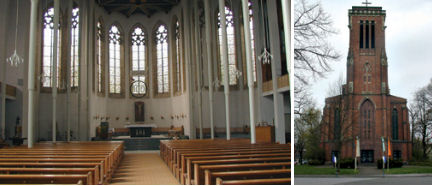Incense and candles release substantial quantities of pollutants that may harm health, a detailed new study of air quality in a Roman Catholic church suggests.

Even brief exposure to contaminated air during a religious service could be harmful to some people, says atmospheric scientist Stephan Weber of the University of Duisburg-Essen in Essen, Germany. A previous study in the Netherlands indicated that the pollutants in smoke from incense and candles may be more toxic than fine-particle pollution from sources such as vehicle engines.
Numerous studies have examined the health effects of combustion by-products from major outdoor sources, such as automobiles and power plants. Researchers have also examined some sources of indoor pollution, including stoves. But there have been few investigations of the health consequences of candles and incense, even though they are usually lit indoors, sometimes in crowded spaces with limited ventilation.
Weber conducted the new study in St. Engelbert Church in Mülheim an der Ruhr, Germany. The church staff burns candles during each mass and incense on some holidays.
Weber installed two devices that continuously sampled air during a 13-day period that began on Christmas Eve of 2004. The equipment measured concentrations of particles up to 10 micrometers in diameter (PM10) and also those 1 µm or smaller (PM1), which endanger people’s hearts, lungs, and arteries (SN: 8/2/03, p. 72: Air Sickness).
During the study, incense burners and candles were lit for services at midnight on Christmas Day, on the morning of the following day, and on New Year’s Eve. During services on other days, only candles burned.
Concentrations of both types of particles almost doubled during services that used only candles. Simultaneous use of incense and candles raised the concentration of PM10 to about seven times that recorded between services, and PM1 reached about nine times its background abundance.
Particulate-matter concentrations quickly dropped after the candles were extinguished, but remained elevated for 24 hours after simultaneous use of candles and incense, Weber reports in an upcoming Environmental Science & Technology.
Even the relatively modest increase linked to candles concerns Theo de Kok of Maastricht University in the Netherlands. In past experiments, he and his collaborators found that PM10 from candles might be especially harmful because, in the body, unidentified constituents of the smoke readily generate free radicals that damage cells.
After candles had burned in a Dutch chapel for 9 hours, particles in the air there formed 10 times as many free radicals as airborne particulates collected along busy roadways do, de Kok’s group reported 2 years ago.
“Even after relatively short exposure, you can expect acute health effects” in susceptible groups, such as shortness of breath in people with asthma, de Kok says. He adds that he knows of no study examining whether groups such as priests and frequent churchgoers have elevated rates of cancer or other pollution-associated health problems.
Incense isn’t used exclusively for religious purposes. Some people who live in cramped quarters burn incense to mask household odors, de Kok notes. In fact, an incense-using student originally proposed the study that de Kok’s group conducted.






